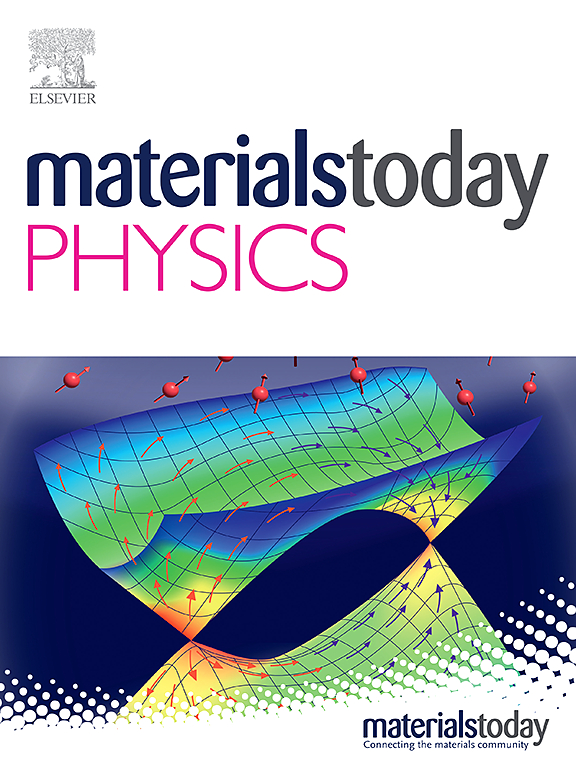Boosted energy harvesting performance of magneto-mechano-electric generator via photon flash annealing for self-powered IoT sensors
IF 9.7
2区 材料科学
Q1 MATERIALS SCIENCE, MULTIDISCIPLINARY
引用次数: 0
Abstract
In this paper, we demonstrate a boosted output magneto-mechano-electric (MME) generator consisting of piezoelectric Pb(Mg1/3Nb2/3)O3‐Pb(Zr,Ti)O3 (PMN-PZT) single crystal and laminated FeBSi alloy (Metglas) prepared by employing photon flash annealing (PFA) treatment. The high-temperature PFA treatment with millisecond-level short pulse irradiation on the Metglas sheet induces surface nanocrystallization, enhances magnetostrictive and mechanical responses. The PFA-treated Metglas-based MME generator exhibits a strong magnetoelectric coupling coefficient of 215 V/cm∙Oe, an open-circuit root mean square (RMS) voltage of 26 V, and RMS output power of 3 mW at an AC magnetic field of 8 Oe. These values are noticeably larger (∼100 % enhancement for output power) than those of pristine Metglas-based MME generators due to the enhanced piezomagnetic coefficient and mechanical quality factor of PFA Metglas. Finally, the output electric energy of the PFA-treated MME generator is utilized to drive an Internet of Things (IoT) device by integrating the MME generator with a power management circuit, a storage capacitor, and an IoT temperature sensor.
利用自供电物联网传感器的光子闪光退火提高磁机电发电机的能量收集性能
在本文中,我们展示了一种由压电Pb(Mg1/3Nb2/3)O3‐Pb(Zr,Ti)O3 (PMN-PZT)单晶和层压FeBSi合金(Metglas)组成的增强输出磁机电(MME)发电机,该发电机采用光子闪光退火(PFA)处理制备。高温PFA处理和毫秒级短脉冲辐照诱导metglass表面纳米化,增强了metglass的磁致伸缩和力学响应。经pfa处理的metglass基MME发电机在交流磁场为8 Oe时具有215 V/cm∙Oe的强磁电耦合系数、26 V的开路均方根(RMS)电压和3 mW的RMS输出功率。由于PFA metglass增强了压磁系数和机械质量因子,这些值明显大于原始metglass基MME发电机(输出功率增强~ 100%)。最后,通过将MME发电机与电源管理电路、存储电容器和物联网温度传感器集成,利用pfa处理的MME发电机的输出电能驱动物联网(IoT)设备。
本文章由计算机程序翻译,如有差异,请以英文原文为准。
求助全文
约1分钟内获得全文
求助全文
来源期刊

Materials Today Physics
Materials Science-General Materials Science
CiteScore
14.00
自引率
7.80%
发文量
284
审稿时长
15 days
期刊介绍:
Materials Today Physics is a multi-disciplinary journal focused on the physics of materials, encompassing both the physical properties and materials synthesis. Operating at the interface of physics and materials science, this journal covers one of the largest and most dynamic fields within physical science. The forefront research in materials physics is driving advancements in new materials, uncovering new physics, and fostering novel applications at an unprecedented pace.
 求助内容:
求助内容: 应助结果提醒方式:
应助结果提醒方式:


